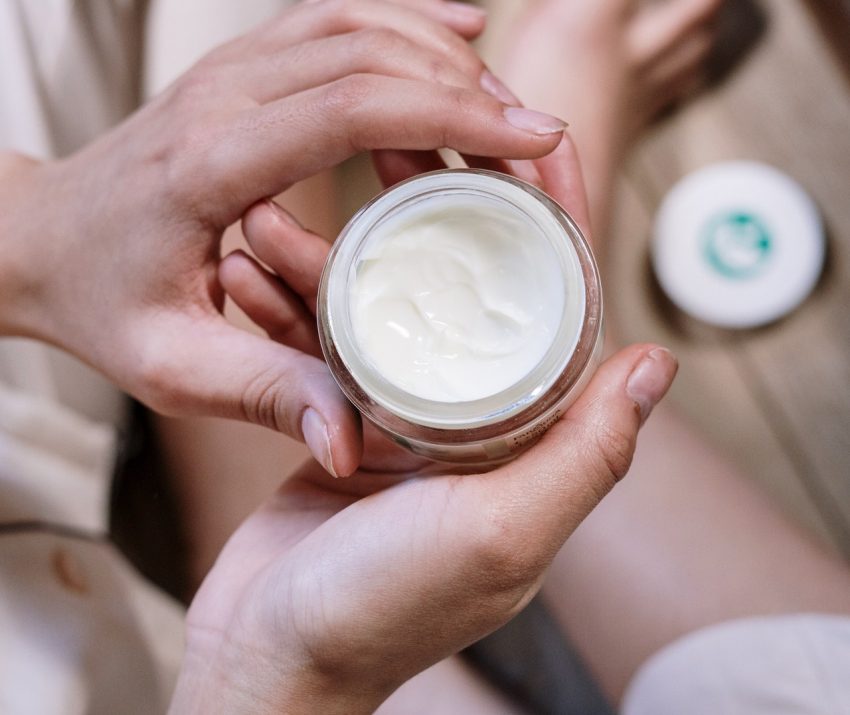Changes in our skin as we age are inevitable, including loss of moisture, changes in…

5 Easy Ways to Improve Skin Texture
Remember when you were young, and silky-smooth skin was just a natural perk? No, neither do we. But don’t you wish there was an easy way to improve your skin texture and bring yourself some much-deserved skin rejuvenation?
From the moment puberty hits, many of us spend years trying to get that soft glow. Trying to recapture that perfect texture we associate with youth and vitality.
Even without such conditions as acne and rosacea barring our way, skin can be unpredictable – and we’re only human. We don’t always remember to keep up with our routines, wear SPF and apply who knows how many lotions and potions to our skin each morning and night…
Getting back to unblemished, beautiful skin can seem impossible. Honestly, we can’t promise you perfect skin – no one can. But we can point you in the right direction, with 5 straightforward tips to get you started.
1. Use SPF Every Day
We could go on until the cows came home about SPF. In fact, we already have. But we know you know that.
One of the biggest contributors to poor skin texture is sun damage. Whether it’s sunspots, pigmentation, or leathery texture, you can bet part of your problem comes from those ever-present UV rays.
We know it’s hard to remember to wear an SPF when you wake up and see another grey day. (Especially in Britain). Of course it’s easier to remember it when the sun is scorching, and you can literally feel your skin burning. What’s important is that you find a balance and make it a part of your routine.
Your SPF shouldn’t disappear as the autumn rolls in. Wearing it can help to prevent redness and uneven skin tone. It can keep your skin hydrated and protected. Generally, it will keep your skin feeling soft and supple for as long as possible.
Don’t give up on SPF just because it’s raining outside!
2. Consider A Chemical Peel
It can be a little unnerving to hear the term “chemical peel”. Much as it can be to learn that they use acids to cause damage to your skin.
Fortunately, this intentional damage is controlled. And control is key.
A chemical peel damages the epidermis or dermis of your skin. Doing so, this controlled damage actually stimulates your body into action; it forces the body to flood the area with collagen and new tissue which helps to improve the tone and texture of your skin.
Incidentally, chemical peels are also great for firming up your face, which in turn reduces the appearance of fine lines and wrinkles. So you get considerably more benefits from a peel than a simple change in texture.
The combination of a more even skin tone, reduced pore size, and a firmer, smoother look all mean one thing; the general appearance of your skin is significantly improved, from one simple treatment.
3. Exfoliate
When you think of exfoliation as intentional abrasions to the skin, it sounds a bit off. But much like the controlled damage of a chemical peel, exfoliating is something that helps our skin to regenerate, albeit on a smaller scale.
Exfoliating actually happens naturally. But we can give it a helping hand with a chemical exfoliator such as glycolic acid (which is actually a milder version of the acid used in many chemical peels).
This removes the dead skin cells and dirt that sit on the surface of the skin. And, you guessed it, reveals the glow of fresh and healthy skin underneath.
The secret to successfully exfoliating is to make sure you don’t overdo it. Once or twice weekly is about right for most people (with the possible exception of those with incredibly dry skin). It’s a quick and simple way to help your skin along to a better texture.
And you can easily incorporate it into your normal skincare routine.
4. Give Microneedling a Go
Another type of intentional damage, microneedling is a little like a chemical peel but using different equipment.
It’s commonly used to improve pigmentation, scarring and (bingo) generally uneven skin tones and textures. Thanks to the help of your practitioner, it’s actually almost entirely painless, despite the needles in the name.
Microneedling works by creating tiny punctures in the skin, which triggers collagen and elastin production. This, combined with the application of nutrient-heavy serums, can have a truly amazing effect on your skin’s texture. Plus, it helps your normal skincare products absorb better, too.
5. Hydrate & Moisturise
This is a bit of a one-two punch tip, because, by hydrate, we mean drink plenty of water. And that means all the time.
Uneven skin texture is often caused by dry skin, breakouts or lack of hydration in our bodies. We know you already know to keep areas like this cleansed and moisturised, but it applies to the rest of your face too. Prevention is simpler than the cure.
Every skin type can suffer from uneven skin tone. And the way to moisturise can vary depending on whether your skin is dry, oily or sensitive. Oil treatments can help to regulate sebum production if your skin is oily (yes, we know that seems odd, but it’s true). A similar treatment will also help with dryness.
It’s important to remember that moisturiser only works to lock in the hydration already present in your skin. If you don’t hydrate with serums (and drink the right amount of water), your moisturiser will simply sit on the surface of your face, locking in… well, nothing.
But if you get the balance right, moisturising can help to improve most skin problems. It can fight fine lines and wrinkles, reduce blemishes and generally make your skin look younger, and brighter.
And remember – you need different moisturisers for day and night to really make the most of it. Our skin works hard to correct its issues as we sleep, so help it along with the right products.
In conclusion
These five tips are a great way to get you on the road to smoother, brighter and more even skin. There are a variety of other things you can do, too, but these will help you to make a start.





